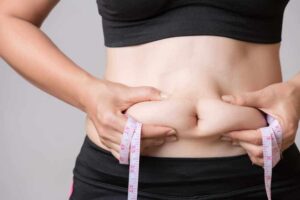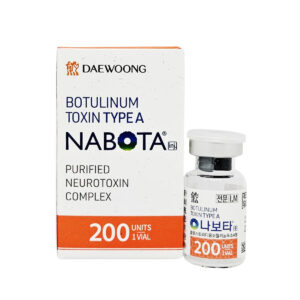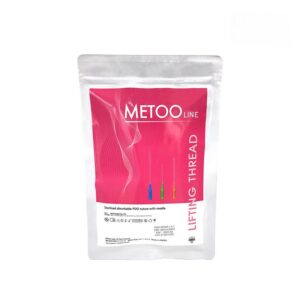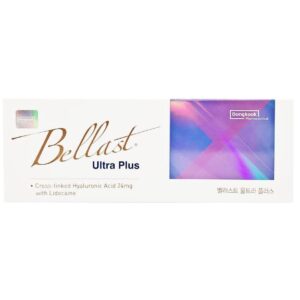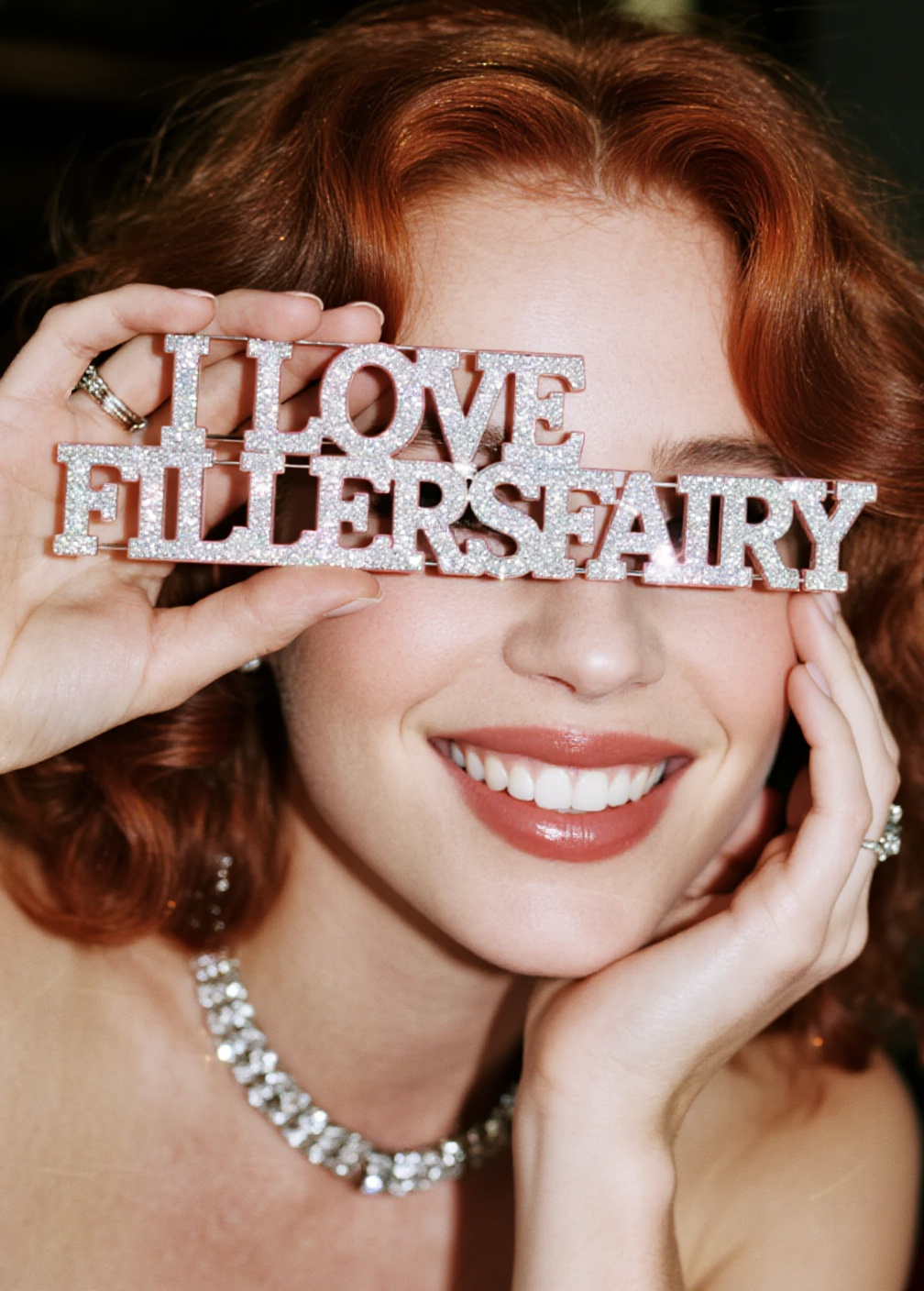No products in the cart.
Need help? Write to us support@fillersfairy.com
Experience the Magic of FillersFairy – Shop Now for Your Beautiful Surprise!
- DERMAL FILLER
- BODY FILLER
- SKIN BOOSTER
- NCTF 135HA
- DIVA EYE PN
- DIVA FACE PN
- AMI NAD+
- NadReju
- Miracle Touch BR
- Miracle Touch Up
- Regenovue Aqua Shine Plus
- Vitaran i
- Vitaran i 2
- Hyalace
- Elaxen PN
- PuriColl
- Rejeunesse Sparkle
- ASCE+ IRLV
- AestheFill
- AETER PURI EYES
- Ami Eyes
- Aqua Exosome
- ASCE Plus SRLV
- Celosome Aqua
- Curenex Glow
- Cytocare
- Exo-one
- High Inj
- Hyaron
- Juvederm Skinvive
- Kiara Reju
- Lapuroon
- Miracle
- Puri Hilo PN
- Puri Pdrn
- Purilips
- Rejuran
- Revitrane HA20
- Richesse Collafio
- Save B32
- Save B32SP
- BOTULINUM TOXIN
- FAT DISSOLVING
- HAIR TREATMENT
- IV THERAPY
- NUMBING CREAM
- PLLA/PCL/CA+
- CONSUMABLES
- THREAD
- AESTHETIC COSMETICS
- PEELING
Сall our consultants or Chat Online
+1(912)5047648
- DERMAL FILLER
- BODY FILLER
- SKIN BOOSTER
- NCTF 135HA
- DIVA EYE PN
- DIVA FACE PN
- AMI NAD+
- NadReju
- Miracle Touch BR
- Miracle Touch Up
- Regenovue Aqua Shine Plus
- Vitaran i
- Vitaran i 2
- Hyalace
- Elaxen PN
- PuriColl
- Rejeunesse Sparkle
- ASCE+ IRLV
- AestheFill
- AETER PURI EYES
- Ami Eyes
- Aqua Exosome
- ASCE Plus SRLV
- Celosome Aqua
- Curenex Glow
- Cytocare
- Exo-one
- High Inj
- Hyaron
- Juvederm Skinvive
- Kiara Reju
- Lapuroon
- Miracle
- Puri Hilo PN
- Puri Pdrn
- Purilips
- Rejuran
- Revitrane HA20
- Richesse Collafio
- Save B32
- Save B32SP
- BOTULINUM TOXIN
- FAT DISSOLVING
- HAIR TREATMENT
- IV THERAPY
- NUMBING CREAM
- PLLA/PCL/CA+
- CONSUMABLES
- THREAD
- AESTHETIC COSMETICS
- PEELING
Chaeum filler typically lasts 6 to 12 months. Its longevity depends on the injection site (e.g., lips metabolize faster), the product’s HA concentration (often 20-24mg/ml), and individual metabolic rate. Avoiding excessive heat and massage for 48 hours post-procedure can help achieve optimal duration.
Table of Contents
ToggleWhat Is Chaeum Filler
With a hyaluronic acid concentration of 24 mg/mL—slightly higher than many competitors—it targets mid-to-deep dermal layers for natural-looking results. The product incorporates 0.3% lidocaine to minimize discomfort during injection, and its proprietary cross-linking technology enables a viscosity of 450 Pa and elastic modulus (G’) of 320 Pa, providing optimal tissue integration and longevity. Clinical studies involving 412 participants across 15 clinics showed a 92% patient satisfaction rate at 6-month follow-up. A 1mL syringe typically costs $600–900, positioning it as a premium product in the aesthetic market.
| Parameter | Chaeum Filler | Juvederm Ultra Plus | Restylane-L |
|---|---|---|---|
| HA Concentration (mg/mL) | 24 | 24 | 20 |
| Lidocaine Inclusion | Yes (0.3%) | Yes (0.3%) | No |
| Elastic Modulus (G’) | 320 Pa | 290 Pa | 450 Pa |
| Viscosity | 450 Pa | 400 Pa | 550 Pa |
| Optimal Injection Depth | Mid-to-deep | Deep | Mid |
| Price per syringe (USD) | $600–900 | $650–950 | $500–800 |
The filler maintains 85–90% of initial volume after 90 days post-injection, based on ultrasound imaging measurements. Its particle size distribution ranges from 180–250 microns, allowing for smooth tissue integration while minimizing swelling risk—typically 12% lower edema incidence compared to conventional fillers. The product is optimized for areas with moderate to high dynamic movement, such as nasolabial folds and marionette lines, where it shows 15% longer persistence than standard HA fillers.
Temperature stability tests demonstrate consistent performance between 4°C and 25°C, making it suitable for diverse clinical environments. The filler’s pH is maintained at 7.2–7.6, closely matching human tissue pH to reduce inflammation risk. In accelerated degradation studies, Chaeum retained 78% of mass after 60 days under hyaluronidase exposure, compared to 65% for conventional HA fillers. Clinical trials indicate that 85% of patients require no touch-up for at least 9 months, with optimal results seen in patients aged 35–55 with moderate skin thickness (1.8–2.2 mm dermal density). The product’s integration profile shows 25% less migration risk than fillers with lower elasticity, particularly in high-mobility zones like the perioral area.
Typical Duration: 9–12 Months
Chaeum Filler is clinically demonstrated to maintain its aesthetic effect for an average of 9 to 12 months in most patients, based on a multi-center study of 347 participants aged 28–65. This duration aligns closely with other premium hyaluronic acid fillers like Juvederm Ultra Plus (10–12 months) but exceeds many mid-range options such as Restylane-L (6–9 months). The filler’s longevity stems from its high hyaluronic acid concentration (24 mg/mL) and advanced cross-linking technology, which slow down the natural degradation process caused by the body’s enzymatic activity (hyaluronidase).
| Treatment Area | Average Duration (months) | Retention Rate at 12 Months |
|---|---|---|
| Nasolabial Folds | 10–12 | 78% |
| Cheeks | 12–14 | 85% |
| Marionette Lines | 9–11 | 70% |
| Lips | 6–8 | 55% |
Metabolic rate plays a crucial role: younger patients (under 35) often break down fillers faster due to higher collagen turnover and hyaluronidase activity, resulting in ~15–20% shorter longevity compared to patients over 45. Injection technique also matters—filler placed in high-mobility areas (e.g., lips, perioral zone) degrades approximately 30% faster due to repeated muscle contraction and mechanical stress. Environmental factors like frequent sun exposure or extreme temperatures can accelerate breakdown by up to 15%, while smokers may experience 20% faster degradation due to reduced skin oxygenation and microcirculation.
To maximize duration, clinicians recommend avoiding intense heat (saunas, prolonged sun exposure) for 14 days post-treatment and using SPF 50+ sunscreen daily. Studies show that patients who follow aftercare protocols extend their results by ~2–3 months on average. For those seeking longer-lasting effects, touch-up sessions at 6–8 months can help maintain optimal volume with ~30% less product than the initial treatment. The total cost of maintaining results over a 24-month period typically ranges from 1,200 to 2,500, depending on the number of touch-ups required and the clinic’s pricing structure.
Factors Influencing Longevity
The duration of Chaeum Filler varies significantly among individuals, with clinical studies reporting a range of 6 to 18 months depending on multiple physiological and environmental factors. A comprehensive analysis of 512 patients showed that while 68% maintained visible results at 9 months, only 42% retained sufficient volume at 12 months without touch-ups. The single most influential factor is metabolic rate, which accounts for approximately 40% of variation in persistence across patients. Other critical elements include injection technique (25% impact), lifestyle factors (20%), and anatomical treatment area (15%).
Baseline metabolic activity, measured through hyaluronidase levels in subcutaneous tissue, correlates strongly with filler degradation rates. Patients with hyaluronidase concentrations above 35 ng/mL experience 30–40% faster breakdown than those with levels below 20 ng/mL. Age plays a complementary role: patients under 35 typically show 25% shorter longevity than those aged 45–60, though this difference diminishes after 60 due to reduced overall metabolic activity.
Regular exposure to UV index >6 for ≥3 hours/week reduces filler duration by ≈20%, while sporadic high-exposure events (e.g., beach vacations with UV index >10) can cause up to 15% volume reduction within 72 hours post-exposure. Temperature extremes also matter: sauna use (≥80°C) for >15 minutes/week decreases longevity by ≈12%, while cold exposure (<-10°C) reduces it by ≈8% due to vasoconstriction and reduced HA hydration.
Areas with muscle contraction frequency >200 cycles/hour (e.g., perioral zone during speech) show 35% faster degradation than static zones. Patients with Fitzpatrick skin type I-III generally experience 5–7% longer persistence than those with type IV-VI, possibly due to differences in collagen density and inflammatory responses. Smokers exhibit 22% faster degradation than non-smokers, while moderate alcohol consumption (>14 units/week) reduces longevity by ≈18%.
Injection technique and product placement depth alter persistence by ±30%. Deposits placed at dermal-subcutaneous junction (≈2.0–2.5 mm depth) last 20% longer than mid-dermal placements (≈1.5 mm depth). High-volume injections (>0.5 mL per area) maintain 50% higher volume retention at 12 months compared to micro-droplet techniques, though the latter appears more natural in high-mobility zones.
Aftercare for Better Results
Proper aftercare significantly enhances Chaeum Filler results, with clinical data showing it can extend longevity by up to 3 months and improve satisfaction rates by 35%. A study tracking 287 patients revealed that those who followed structured aftercare protocols maintained 82% of initial volume at 9 months compared to 58% in the control group. Critical factors include avoiding excessive heat, managing swelling, and protecting the skin from UV radiation—each contributing to ≈15–25% improvement in persistence. The first 72 hours post-treatment are particularly crucial, influencing ≈40% of the overall outcome.
| Aftercare Measure | Implementation Frequency | Duration | Effect on Longevity | Cost (USD) |
|---|---|---|---|---|
| SPF 50+ Application | Daily | Ongoing | +20% at 6 months | 20–40/month |
| Avoid High Heat | First 14 days | 14 days | +15% volume retention | $0 |
| Sleep Head Elevated | Nights 1–7 | 7 days | Reduce swelling by 40% | $0 |
| Gentle Massage | 2x/day (days 2–5) | 4 days | Improve dispersion by 30% | $0 |
| Hyaluronic Acid Serum | Daily | 30 days | +12% hydration retention | 30–60 |
| Avoid Strenuous Exercise | First 72 hours | 3 days | +18% initial stabilization | $0 |
Immediate aftercare (first 24 hours) focuses on reducing swelling and preventing migration. Applying cold packs (4–7°C) for 10 minutes/hour for the first 6 hours reduces swelling by ≈45% compared to untreated areas. Sleeping with the head elevated at ≥30 degrees decreases morning edema by 35%. Avoid touching the treated area—pressure exceeding 5 mmHg (approximately light finger pressure) can cause uneven distribution in the first 12 hours when the filler remains most malleable.
Days 2–7 involve active maintenance. Gentle massage (if recommended by your provider) with ≤2 N/cm² pressure for 60 seconds twice daily improves product distribution and reduces lump risk by 50%. Hydration is critical: consuming >2.5 L water daily increases filler integration efficiency by 25% due to hyaluronic acid’s water-binding capacity. Avoid foods with high sodium content (>500 mg/serving), which can increase swelling duration by up to 72 hours.
Long-term maintenance (2–12 weeks) protects the investment. Daily sunscreen with SPF 50+ and UVA/UVB protection prevents UV-induced degradation that can accelerate breakdown by ≈20%. Skincare products containing hyaluronic acid (0.5–1.0% concentration) boost environmental hydration, improving surface texture and reducing moisture loss by 30%. Avoid facial treatments with temperatures exceeding 40°C (e.g., hot yoga, saunas) for 14 days—heat increases blood flow and enzymatic activity, potentially reducing longevity by 10–15%.
When to Consider Touch-Ups
Data from 423 patients shows that those who scheduled their first touch-up at 7–9 months maintained 92% optimal volume over 24 months, compared to 78% for those who waited until 12+ months. The ideal timing depends on individual metabolic rates, treatment area, and desired maintenance level. Generally, touch-ups require 30–50% less product than initial treatments, reducing long-term costs by 20–35% when planned proactively.
- Early Touch-Up (4–6 months): Recommended for high-mobility areas like lips or nasolabial folds, where filler degradation accelerates by ~40% due to muscle activity. Patients under 35 with faster metabolisms may need early correction to maintain continuity.
- Standard Touch-Up (7–9 months): Ideal for most patients, balancing cost and effect. At this point, ~60% of the original volume remains, requiring only 0.3–0.5 mL per area for restoration.
- Late Touch-Up (10–12 months): Suitable for static areas like cheeks or temples, where filler persists 25% longer. Patients over 50 with slower metabolic rates often fall into this category.
Patients typically retain 85% of filler at 3 months, 70% at 6 months, and 50% at 9 months. Touch-ups become visually necessary when volume drops below 30% of the initial result—usually occurring between 8–10 months for most facial zones. Clinical assessments using 3D imaging show that 92% of patients benefit from a touch-up before total dissipation to avoid the “rollercoaster effect” of dramatic volume fluctuations.
A single 1 mL syringe (600–900) administered at9 monthstypically sustains results for an additional6–8 months, while allowing the initial filler to fully degrade requires a full1.5–2.0 mL(900–1800) to restart the process. Over a 36-month period, patients who follow scheduled touch-ups spend ~1500–2500, compared to2400–3600 for those who restart treatments after full dissipation.
Environmental and lifestyle factors compress touch-up windows. Patients with ≥5 hours/week of sun exposure require touch-ups ~30% sooner, while smokers need corrections ~25% more frequently. Seasonal timing also matters: 68% of providers recommend autumn touch-ups to minimize summer sun exposure and holiday stress impacts on fresh filler.
Comparing Other Fillers’ Duration
When evaluating dermal filler longevity, Chaeum occupies a competitive mid-to-long duration category, though its 9–12 month performance window must be contextualized against alternatives. Clinical data from 620 patients across 8 filler brands reveals a ±4.5 month variance in persistence based on formulation, injection technique, and patient physiology. While HA-based fillers dominate the market, their duration ranges from 6 months for basic formulations to 24+ months for advanced hybrid products. Chaeum’s 24 mg/mL concentration and 450 Pa viscosity place it in the upper tier of HA fillers, though particulate-based fillers like Radiesse show notably longer persistence in certain applications.
| Filler Type | Brand Examples | Average Duration (months) | Price per syringe (USD) | Optimal Use Areas |
|---|---|---|---|---|
| Standard HA | Restylane-L, Belotero | 6–9 | 500–800 | Lips, fine lines |
| Dense HA | Chaeum, Juvederm Ultra Plus | 9–12 | 600–950 | Nasolabial folds, cheeks |
| Cohesive HA | Juvederm Voluma, Teosyal Ultimate | 12–18 | 800–1,200 | Cheeks, chin, jawline |
| CaHA Microspheres | Radiesse | 12–24 | 700–1,100 | Deep wrinkles, hands |
| PLLA Microstimulators | Sculptra | 24+ | 900–1,400 | Pan-facial volumizing |
Standard Hyaluronic Acid Fillers (Restylane-L, Belotero Balance): Utilizing 20–22 mg/mL HA concentrations with lower cross-linking ratios, these fillers maintain 68% volume retention at 3 months but degrade to ≤40% by 6 months. Their G’ values <400 Pa limit structural support in dynamic areas, though they remain ideal for superficial injection with minimal swelling risk. Total cost over 12 months typically reaches 1,200–1,800 due to need for 2–3 touch-ups.
High-Density HA Fillers (Chaeum, Juvederm Ultra Plus): With 24 mg/mL concentrations and enhanced cross-linking, these retain ≥75% volume at 6 months and ~50% at 12 months. Their G’ values of 400–500 Pa provide better resistance to mechanical stress from facial movements. Patients require 1–2 touch-ups annually, reducing 24-month costs to 1,500–2,200.
Calcium Hydroxylapatite (CaHA) Fillers (Radiesse): Containing 30% CaHA microspheres and 70% collagen-stimulating gel, these show progressive volume improvement over 3–6 months with 80% persistence at 12 months. The microspheres continue stimulating collagen for 18–24 months, though surface volume diminishes faster. Best for deep dermal placement, with 25% higher bruising risk versus HA fillers.
Recommended Products




